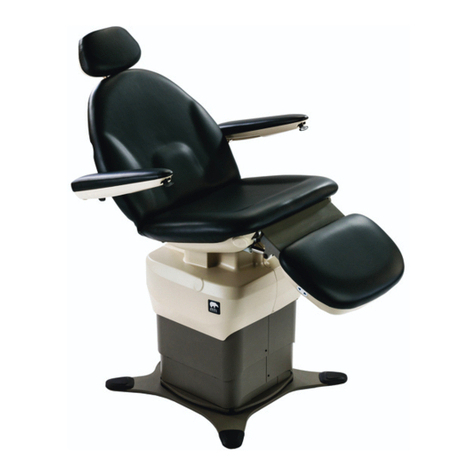
Table of Contents iii
GENERAL INFORMATION......................................................................................................................................................................... 1
Purpose of this Manual...................................................................................................................................................................................................1
Intended Product Use.....................................................................................................................................................................................................1
Symbols and Warnings...................................................................................................................................................................................................1
Transportation and Storage Conditions ..............................................................................................................................................................2
INSTALLATION............................................................................................................................................................................................. 2
READ THIS MANUAL BEFORE INSTALLATION! ...................................................................................................................................................2
Unpacking..............................................................................................................................................................................................................................3
Leveling Feet Adjustements........................................................................................................................................................................................5
Upholstery Installation ..................................................................................................................................................................................................5
CONTROLS & FEATURES .......................................................................................................................................................................... 7
526 Pedestal Base Chair .................................................................................................................................................................................................7
527S Model Chairs.............................................................................................................................................................................................................7
527P Model Chairs ............................................................................................................................................................................................................7
527W Model Chair.............................................................................................................................................................................................................7
ASPECTS OF FOOT CONTROLS ............................................................................................................................................................. 7
OPERATION.................................................................................................................................................................................................. 8
Model 526 Foot/Hand Controls................................................................................................................................................................................8
Model 527S & 527WS Foot/Hand Controls........................................................................................................................................................8
Model 527P & 527WP “Programmable” Power Base Chair........................................................................................................................9
Electrical Lock-Out ............................................................................................................................................................................................................9
Swivel Base Installation ..................................................................................................................................................................................................9
Swivel Base Operation................................................................................................................................................................................................. 10
Foot Section Adjustment........................................................................................................................................................................................... 10
Debris Tray Tension Adjustment............................................................................................................................................................................ 11
Retractable Arms............................................................................................................................................................................................................. 11
Optional Duplex Electrical Outlet.........................................................................................................................................................................11
CLEANING & DISINFECTION.................................................................................................................................................................12
Upholstery........................................................................................................................................................................................................................... 12
Painted Surfaces .............................................................................................................................................................................................................. 12
Plastic Components ...................................................................................................................................................................................................... 12
MAINTENANCE .........................................................................................................................................................................................12
Trouble Shooting ........................................................................................................................................................................................................... 12
Fuse Replacement*........................................................................................................................................................................................................ 12
527W OWNERSHIP ..................................................................................................................................................................................13
Purpose of Section......................................................................................................................................................................................................... 13
Installation........................................................................................................................................................................................................................... 13
SPECIFICATIONS.......................................................................................................................................................................................15
ACCESSORIES ............................................................................................................................................................................................16
LIMITED WARRANTY...............................................................................................................................................................................17





























